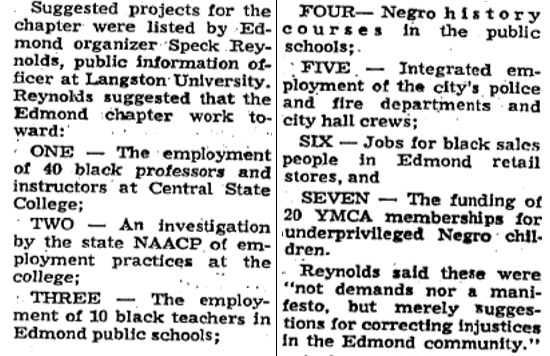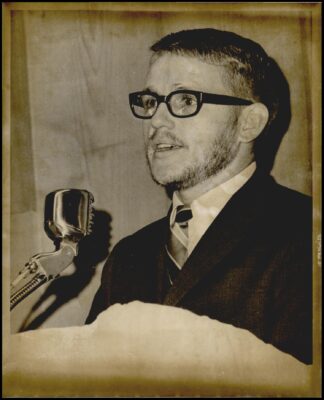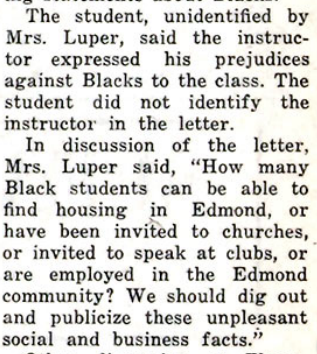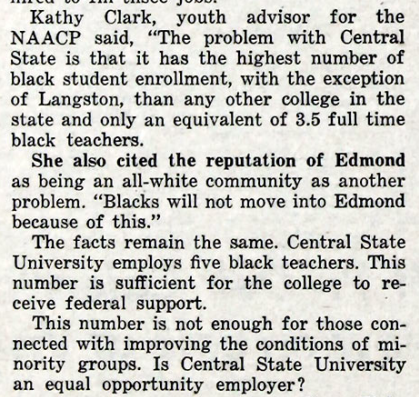Integrating Edmond
Throughout the wave of civil rights legislation in the 1960s and into the 1970s, Edmond remained 100% white. Even though Central State College had been working to address racism and discrimination on campus, outside of a few African American instructors at the college, no African Americans lived or worked in Edmond at the beginning of the decade. In response to incidents of discrimination at Central State College in late 1968, several Edmond residents sought to establish a chapter of the National Association for the Advancement of Colored People (NAACP). However, since Edmond was all white at this time, it meant the chapter would consist of mostly white people. It was organized in May 1969 by Speck Reynolds, an Edmond resident and public relations assistant at Langston, along with Henry Floyd, a member of the Oklahoma City NAACP.

The group’s efforts were met with resistance. Speck Reynolds received several threatening phone calls, and not even a week after the announcement was made, someone detonated a bomb at his home in downtown Edmond. No one was hurt, but the bomb did blow a large hole in his yard.

In addition to challenging the issues present at Central State College, the Edmond branch of the NAACP also tackled the issues surrounding housing and employment opportunities for African Americans in Edmond. The 1968 Fair Housing Act made discrimination based on race or skin color illegal when buying or renting a home. But no African American families had owned property in Edmond since Hazel Covington sold her land in 1920. The NAACP highlighted the case of an Oklahoma City African American family with two children who were prevented from purchasing a home in Edmond. The Edmond NAACP approached the city council to get them to endorse the aims of the group, but the council denied the motion to read the resolution. They then adjourned the meeting early to go listen to an address by President Nixon.
“This city has a definite racial problem, a negro cannot get a job or buy a home in Edmond.”
Central State college student and president of the Edmond NAACP, Paul Clark, as Quoted in the November 4th, 1969 edition of The Oklahoman.

Staff Photo by Bob Albright. Published on 02-18-70. Photo Courtesy of the Oklahoma Publishing Company Photography Collection from the Oklahoma Historical Society.
One of the frequent criticisms towards Central State College at this time was the lack of the African American instructors. While, one of the reasons for this was the lack of qualified applicants, the fact that Edmond was an all-white town, was also a factor in failing to attract African American professors to Central State. Oklahoma civil rights leader, Clara Luper, spoke at Central highlighting this fact.

Clara Luper spoke at a discussion sponsored by the African American Student Union, where she highlighted the lack of African American instructors at Central and the lack of opportunities in Edmond. She also mentioned a case of where a student stated that a teacher at Central made discriminatory remarks about African American people.

Housing discrimination continued to play a significant role in lack of professors during the early 1970s.
In 1976, eight years after the passage of the Fair Housing Act, Paul Lehman and his family moved to Edmond. According to his son, Christopher Lehman, an Edmond Memorial High School graduate who now is a professor at St. Cloud State University, they were the first African American family to live in Edmond in decades. Slowly more and more African American families would move into Edmond as the decade moved on.
